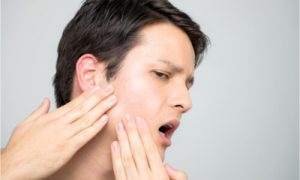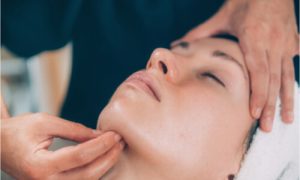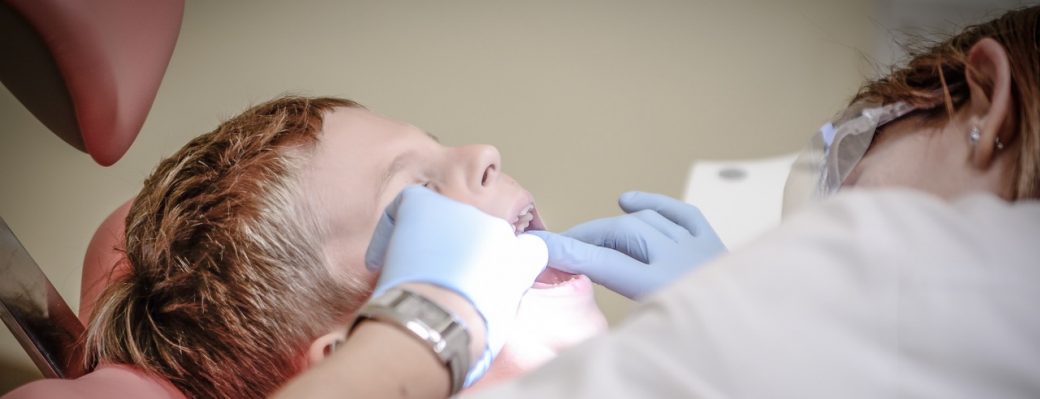TMJ or the temporomandibular joint is what connects our jawbone and skull. When this joint gets misaligned or damaged, TMJ tooth pain can occur along with other sensitivities. Apart from a toothache, TMJ pain might also include discomfort in certain areas such as the jaw, neck, and shoulders. Once the symptoms of TMJ disorder start to manifest, it is advisable to see a TMJ specialist right away.
Relationship Between TMJ and Tooth Pain
 Can TMJ disorder cause tooth pain? The answer is yes. Since the joint is very much close to the teeth, your teeth might feel a tingling sensation if the TMJ is damaged or fractured. Tooth pain caused by TMD is usually accompanied by headaches as well.
Can TMJ disorder cause tooth pain? The answer is yes. Since the joint is very much close to the teeth, your teeth might feel a tingling sensation if the TMJ is damaged or fractured. Tooth pain caused by TMD is usually accompanied by headaches as well.
Below are the reasons why temporomandibular joint disorder causes tooth pain:
- Muscle issues. If the muscles of the joint are heavily pressured, inflammation and pain could follow.
- Problems with the disc. It is also possible for the cartilage discs inside the joint to be dislocated causing joint and tooth pain.
TMJ disorders also cause tooth pain due to the following:
- Misaligned teeth. Having bite problems commonly causes uneven pressure on the muscles causing pain to take place.
- Teeth grinding. Bruxism is the condition where the person grinds their teeth involuntarily. It commonly happens during sleep and causes pain in the teeth.
- Tensed muscle. Have you ever noticed the pain that gradually develops whenever you feel stressed and anxious? That is also one of the reasons why your muscles feel tensed giving you an aching sensation that reaches your teeth.
- Injuries.
- A jaw that is overstretched.
When these things occur, pain in the TMJ may start to arise that may also manifest discomfort on teeth. Apart from a toothache, TMJ pain may also cause the following symptoms:
- pain while chewing or biting
- clicking or popping sounds when you open and close your mouth
- locking of the jaws
- headaches
- pain in other areas like the face, jaw, and neck
Medical Approach For TMJ Tooth Pain
To prevent unnecessary dental treatments, it is vital for the dentist to determine whether or not the root cause of your tooth pain is a TMJ disorder. After diagnosing that the patient is suffering from TMJ tooth pain, the only viable solution would be treating the TMJ disorder.
Temporomandibular joint pain is typically diagnosed and treated by oral and maxillofacial surgeons.
Most TMJ pain can be relieved by over-the-counter anti-inflammatory medicines and muscle relaxant products. Quick home remedies could also include hot and cold compresses.
If the case is not severe and does not conclude to damaged joints, the condition can be managed through careful measures such as a soft-diet, practiced chewing, putting a stop to unhealthy habits like teeth grinding.
In some cases, a surgical operation may be required to relocate or replace the jaw joint disc. This orthodontic approach is necessary if the pressure in the joint and muscle is due to malocclusion problems.
Another way to relieve TMJ tooth pain is by doing jaw massages and exercises. This method is proven to be an effective way to relax the muscle and joints which eventually lessens the discomfort. Stress management strategies also help in alleviating the irritating sensation caused by TMJ tooth pain. If pain occurs in the morning after sleep, your dentist might also recommend the use of a mouthguard during sleep for protection.
Easy-To-Do Jaw Exercises
The following exercises are highly recommended by orthopedic and ENT surgeons and are effective in improving the movement of your jaw joints. If you are having trouble doing these, you may ask your doctor for guidance and other recommendations.
 Below are the exercises that you can do to relieve TMJ pain:
Below are the exercises that you can do to relieve TMJ pain:
- Steady and relaxed jaw exercise. To do this, place your tongue on the upper part of your mouth right behind your teeth, then slowly open and close your mouth to relax your muscles.
- Partial opening. In this exercise, you’ll need to place a finger on your TMJ, and another one on your chin. Now use the latter finger to open your mouth partially, you should feel slight resistance but not pain while doing this.
- Full opening. You can do this exercise by following the process of partial opening exercise, however, you will have to fully open your mouth in this one.
- Chin exercise. Place your hands behind your back to help your shoulders relax. After doing so, pull your chin up and down while deliberately creating a double chin, keep the position for a few seconds then repeat.
- Mouth resistance exercise (opening). Place your thumb just under your chin and open your mouth gently. Put pressure on the exercise by pushing your chin to resist the mouth opening movement.
- Mouth resistance exercise (closing). Hold your chin by using both of your hands. This exercise is the exact opposite of the opening mouth resistance exercise, with this one, you’ll have to resist the closing of the mouth by squeezing and pulling the chin.
- Tongue up movement. Keep your tongue on the upper part of your mouth and gently open and close your mouth.
- Side to side jaw exercise. You will be needing an object in this one, about 1/4 inch in size. Place it between your front teeth as you move your jaw from side to side. If you notice that the exercise is becoming easier, add more objects or use a bigger one.
These exercises do not claim to fully treat the TMJ pain, but rather to help patients deal with and manage the discomfort. If pain persists, it would still be better to consult your doctor.


